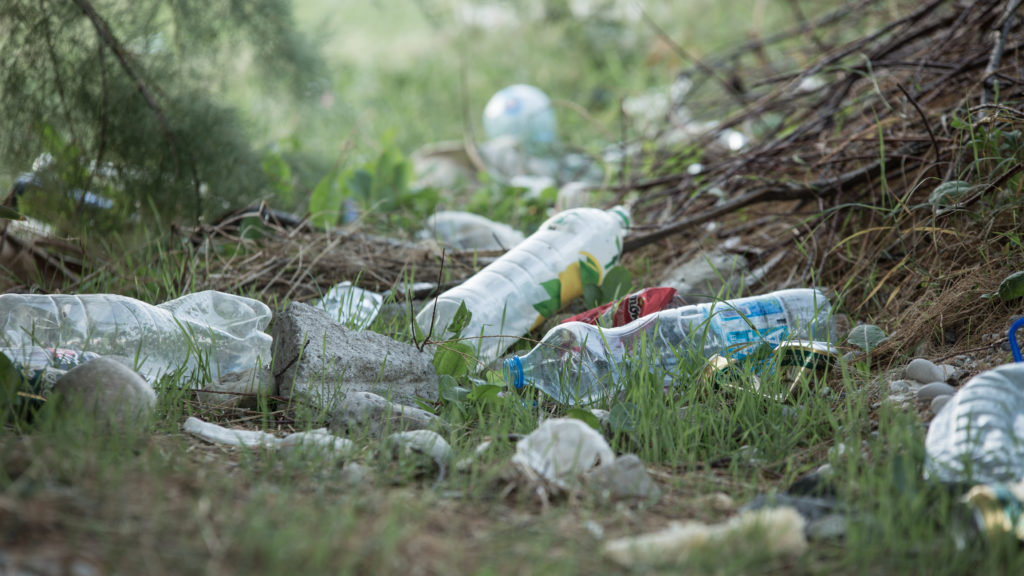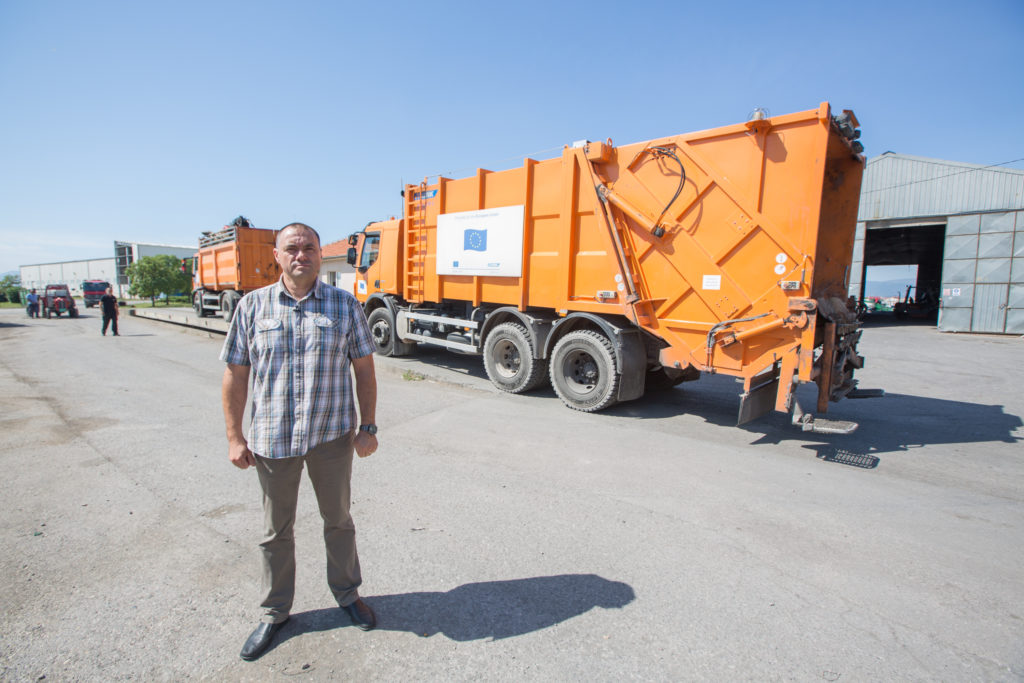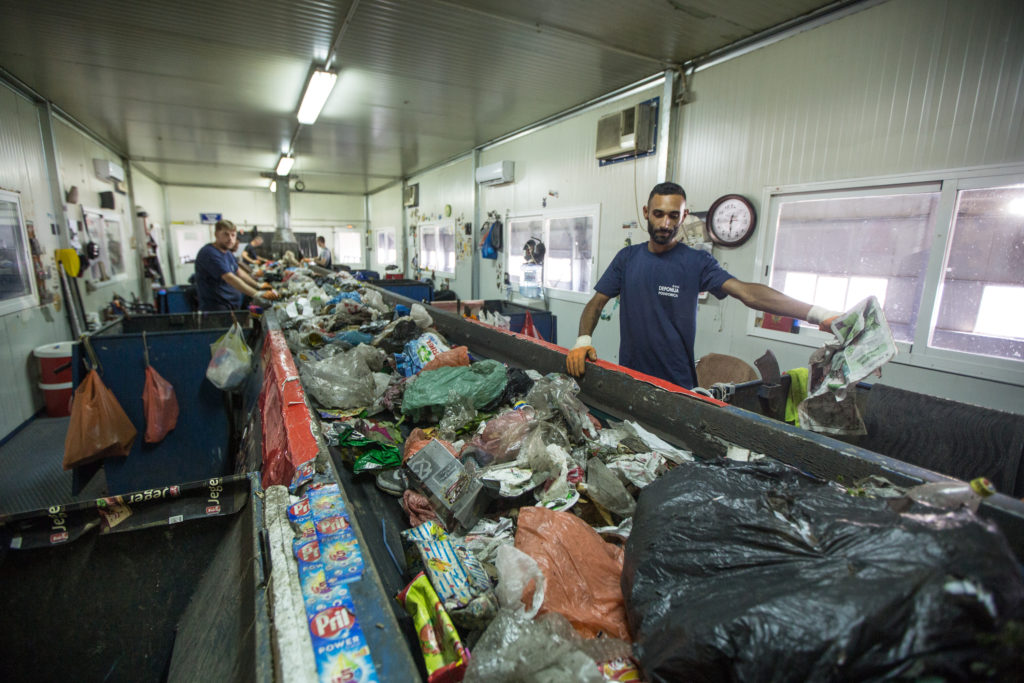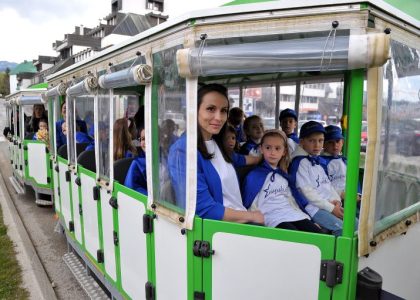Besides the fact that she always throws the ball on the right side, the Montenegrin handball player Milena Raicevic decided to do the same with her waste. In order to find the right place for collected plastic, glass bottles, and old newspapers, she inquired how and where she could recycle all of them.
“They told me I could bring them to the Recycling Yard, and that that is the right place,” Milena said in an interview for the EU Info Centre.
Milena is the face of the campaign “SET AN EXAMPLE. JOIN IN!” organised by the Delegation of the European Union to Montenegro and the EU Info Centre, with the main goal of promoting “green” lifestyles and the protection of the environment. Milena decided to promote the benefits of recycling and motivate citizens to join in.

“I recycle because I want to protect the environment: the air, water, soil – the basics of our lives. We all need to be aware of this, to get involved, to contribute, to raise our awarness, and to preserve what we have in order to have a better life,” explained Milena .
There are six recycling yards in Podgorica where citizens can bring paper, plastic, cardboard, PET packaging, cans, tires, white goods, electronic waste, wood, metal, old batteries and medicine, edible waste, motor oils, glass, styrofoam and many other materials. They can bring their waste at these locations every day from 7:00 CEST to 19:00 CEST, including weekends as well. Recycling yards are located in Zabjelo (Iva Vizina Street), Tolosi (Mihailo Lalic Boulevard), Konik (Husinskih Rudara Street), Zlatica (Orjenska Street), Donja Gorica (Kritskog odreda Street), and in Golubovci (Goricani).
“The recycling yards are located so that citizens from all parts of the city can bring their waste there easily. Experience so far has shown that citizens mostly bring paper, plastic, and glass, but also electronic waste. Depending on the type of waste, the materials are sent to the Recycling Centre for further treatment, while the electronic waste is sent to a company from the city of Bar which handles this type of material,” explained Senada Mulesković, the PR of the Company “Cistoca.“
The Recycling Centre is located within the company “Deponija” doo Podgorica. The Head of Maintenance, Ratko Pavicevic, welcomed us there and explained that, in fact, there aren’t any recycling machines in Montenegro. The collected waste which is intended for recycling is actually exported.

“We’re basically a sorting centre. All recycling materials we produce are exported to Serbia, Croatia, Slovenia or Austria,” said Pavicevic.
Waste is a stock market product and its price is constantly changing. In order to be exported, it needs to be processed.

“If a truck comes from the Recycling Yard, it is loaded with sorted material and then immediately sent to the end of the technological line where we do another sorting (we separate paper, cardboard, and PET packaging by color). From there the waste goes to the multipurpose press where it is crushed into balls,”Pavicevic explained by also adding that “when the truck from “Cistoca“ brings municipal waste out of the container, we first separate the bulky waste, and the rest of the waste then goes through two sorting cabins, trommel, electromagnets… When the material is sorted, it undergoes the balling process and then onto its sale. ”
Depending on the technology, the plastic can be used to make ampoules or granules from which a new PET bottle is made – e.g. a juice bottle. New paper is made from recycled paper, which, Pavicevic claimed, is no different from the original paper.
Montenegro recycles 10% of its waste
Last year, the Recycling Centre treated about 13 thousand tonnes of waste, of which about two thousand tonnes was disposed of or prepared to be exported for recycling. According to the Ministry of Tourism and Sustainable Development, about 10% of waste is recycled annually in Montenegro.
“Reports have shown that recycling rates have been increasing every year. Although it is not a dramatic growth, it gives us confirmation that we are on the right track,” said Igor Jovanovic, from the Ministry of Sustainable Development and Tourism.

Montenegro will have to continue along this path if it is to meet the requirements of the European Union. Brussels officially adopted the European Plastics Strategy last year, which has three main objectives: banning the use of microplastics, reducing the amount of disposable plastic, and most importantly – by 2030, make sure that all plastic packaging is made up of recyclable material. Ana Stanisic-Vrbica, from the EU Delegation to Montenegro, explained what this mean for Montenegro as a candidate country for an EU membership.
“By the time Montenegro becomes an EU member, all the aforementioned measures will already be in place. Therefore, in addition to solving its own environmental problems, Montenegro must also start working intensively to prepare itself to take on new commitments on time. Given that Montenegro is in the process of negotiating with the EU, and that Montenegro is already in its negotiating position for Chapter 27 and committed to accepting the acquis communautaire, this means that it must work intensively to raise the citizens’ awareness.The most important focus should be on proper waste management – the reduction, reuse and recycling of various materials,” advised Stanisic Vrbica.
When it comes to the recycling rates, the Ministry of Tourism and Sustainable Development told the EU Info Centre that they had negotiated goals for Chapter 27, which would amount to 50% for household waste and 70% for construction waste. This will also be translated into a new law that will treat the area of waste which is planned for next year.
If you also want Montenegro to achieve its goals, please contribute. Set an example and join in – start recycling!


